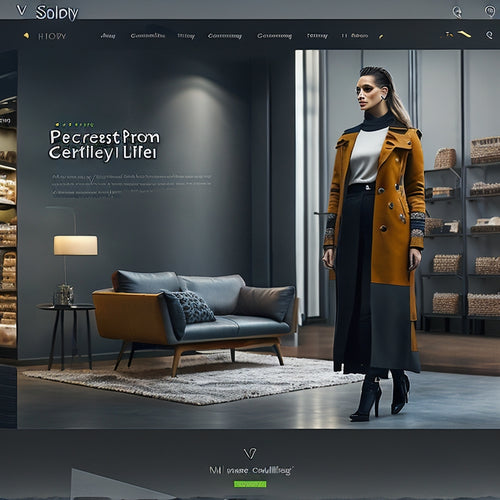
Virtual Terminals Revolutionize Online Payment Transactions
Share
Virtual terminals have transformed the online payment landscape by providing a secure, efficient, and cost-effective solution for businesses to process card-not-present transactions, eliminating the need for specialized hardware and enhancing customer data protection. By manually inputting card details, merchants can guarantee secure transmission and authentication with payment processors, while maintaining data security through encryption and SSL protocols. With customizable features, robust security measures, and streamlined payment processing, virtual terminals cater to diverse businesses, reducing fraud risk and improving customer experience. Exploring the capabilities and features of virtual terminals reveals a wealth of opportunities for optimized operations and enhanced customer satisfaction.
Key Takeaways
• Virtual terminals enhance security measures for customer data protection, ensuring safe online transactions.
• They eliminate the need for specialized hardware like card readers, making payment processing more convenient.
• Merchants can manually input card details into the interface, securely transmitting them to the payment processor for authentication.
• Virtual terminals offer customizable payment solutions for diverse businesses, featuring tokenization and recurring payment support.
• They streamline payment processing, reduce fraud risk, and improve customer experience, ultimately optimizing business operations.
Understanding Virtual Terminals
In the world of online payment transactions, a virtual terminal is basically a web-based application that allows merchants to process credit card transactions securely and effectively, eliminating the need for specialized hardware like card readers. This solution offers numerous benefits, including improved security measures to safeguard sensitive customer data.
When implementing a virtual terminal, merchants must consider integration requirements with their existing payment processing systems. A seamless integration guarantees efficient payment processing, minimizing the risk of errors and fraudulent activities.
How Virtual Terminals Work
The operational workflow of a virtual terminal involves a series of secure and validated steps, where merchants manually input card details into the interface, which are then transmitted to the payment processor for authentication and approval. This transaction flow guarantees that sensitive information is protected throughout the process.
| Step | Description |
|---|---|
| 1. Card Details Input | Merchant manually enters card details into the virtual terminal interface |
| 2. Data Transmission | Card details are securely sent to the payment processor for authentication |
| 3. Authentication and Approval | Payment processor verifies card details with the credit card issuer and transfers funds upon approval |
Throughout this process, data security is maintained through robust encryption and secure socket layer (SSL) protocols, ensuring that sensitive information remains protected. By understanding how virtual terminals work, merchants can have confidence that their online payment transactions are safe and secure.
Virtual Terminals Vs Gateways
Specifically, virtual terminals and payment gateways are often confused, yet they serve distinct purposes in the online payment processing ecosystem.
A virtual terminal is a web-based application that enables merchants to manually input credit card details for card-not-present transactions, ideal for mail orders, online retail, and mobile pop-up shops.
In contrast, payment gateways are integrated into online store checkout systems, facilitating payment processing solutions for online transactions.
While both facilitate online payments, virtual terminals cater to card-not-present transactions, whereas payment gateways support card-present transactions.
Understanding the differences between these two entities is essential for selecting the right solution for your business needs, ensuring secure and efficient payment processing.
Key Features and Users
Virtual terminals cater to a diverse range of businesses and professionals, offering a customizable payment solution that accommodates unique operational needs. This flexibility is particularly beneficial for users who require tailored payment processing solutions.
Key features of virtual terminals include tokenization for enhanced data security, recurring payment support, and detailed transaction data processing. These features provide users with benefits such as streamlined payment processing, reduced fraud risk, and improved customer experience.
Moreover, virtual terminals incorporate robust security measures, ensuring that sensitive customer information remains protected. By leveraging these features, businesses can optimize their payment processing operations, resulting in increased efficiency, reduced costs, and enhanced customer satisfaction.
Choosing the Right Terminal
Assessing a virtual terminal's capabilities and features is vital to guarantee seamless integration with existing payment processing systems and alignment with business needs. Terminal selection impacts user experience significantly, making it crucial to compare features and security measures.
Key considerations include:
- Manual entry features for credit card details
- Invoicing capabilities with automatic payment options
- Support for recurring payments
Real-time reporting and industry-standard security measures, such as tokenization and fraud management tools, are also crucial. By carefully evaluating these features, businesses can ensure a secure and efficient payment processing experience.
A thorough comparison of virtual terminals will help businesses make an informed decision, ultimately leading to improved customer satisfaction and reduced transaction risks.
Frequently Asked Questions
Can Virtual Terminals Be Used for Business-To-Business Transactions?
Yes, virtual terminals can be used for business-to-business (B2B) transactions, enhancing business efficiency by securely processing credit card payments, thereby streamlining B2B transactions and reducing administrative burdens.
Are There Any Limits to the Number of Transactions per Day?
Daily transaction volume exceeds 10 million globally, highlighting the need for efficient payment processing. Virtual terminals typically have transaction volume limits and daily transaction caps to prevent fraud and guarantee system stability, safeguarding businesses from potential risks.
Do Virtual Terminals Support International Currency Transactions?
Virtual terminals typically offer multi-currency support, enabling businesses to process international transactions, albeit with varying transaction fees. Implementing robust security measures and customer authentication protocols guarantees secure and compliant transactions.
Can Virtual Terminals Be Integrated With Existing Accounting Software?
Virtual terminals can seamlessly integrate with existing accounting software, ensuring consistency and accuracy in financial records, through API connectivity, offering integration compatibility and streamlining payment processing and accounting operations.
Are Virtual Terminals Compliant With Industry Standards Like Pci-Dss?
Virtual terminals must adhere to industry standards, ensuring PCI DSS compliance through robust security measures, such as encryption, tokenization, and secure data storage, to safeguard sensitive customer information and prevent data breaches.
Related Posts
-

Scale Your Online Store With Digital Solutions
You can scale your online store exponentially by integrating digital solutions that overcome common e-commerce hurdle...
-

Streamlining Your Shopify Store for Long-Term Reliability With Automation
The implementation of automation in Shopify stores has emerged as a significant strategy for businesses seeking to o...
-

Social Proof Shopify Apps Help Build Trust Among Customers by Displaying Real Reviews and Actions
This article examines the efficacy of social proof Shopify apps in cultivating trust among customers through the dis...


